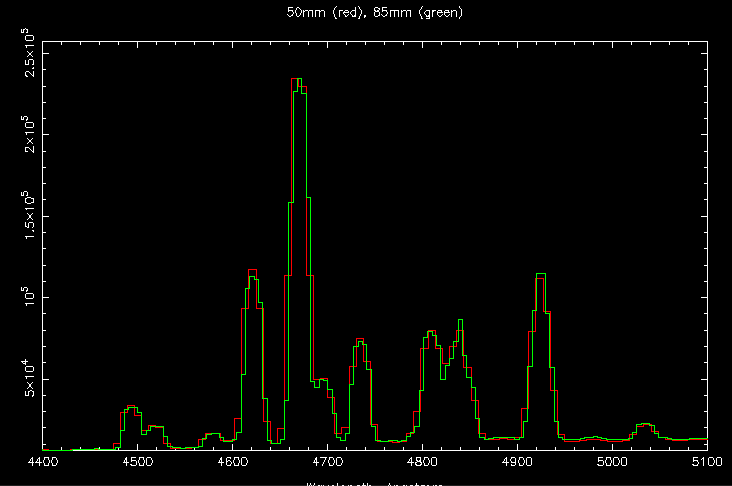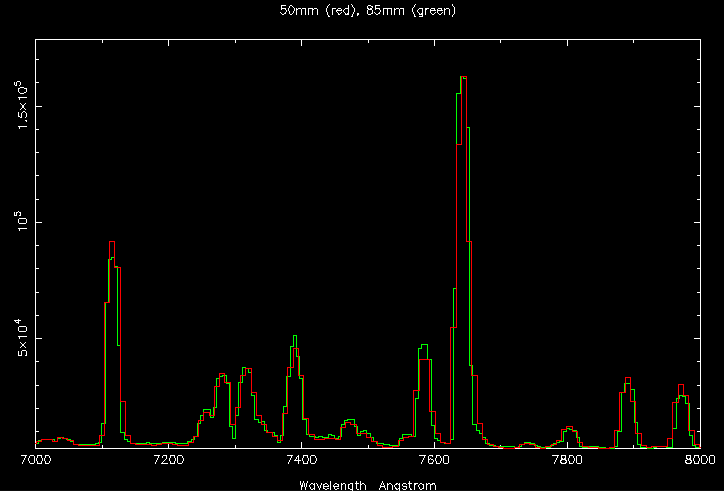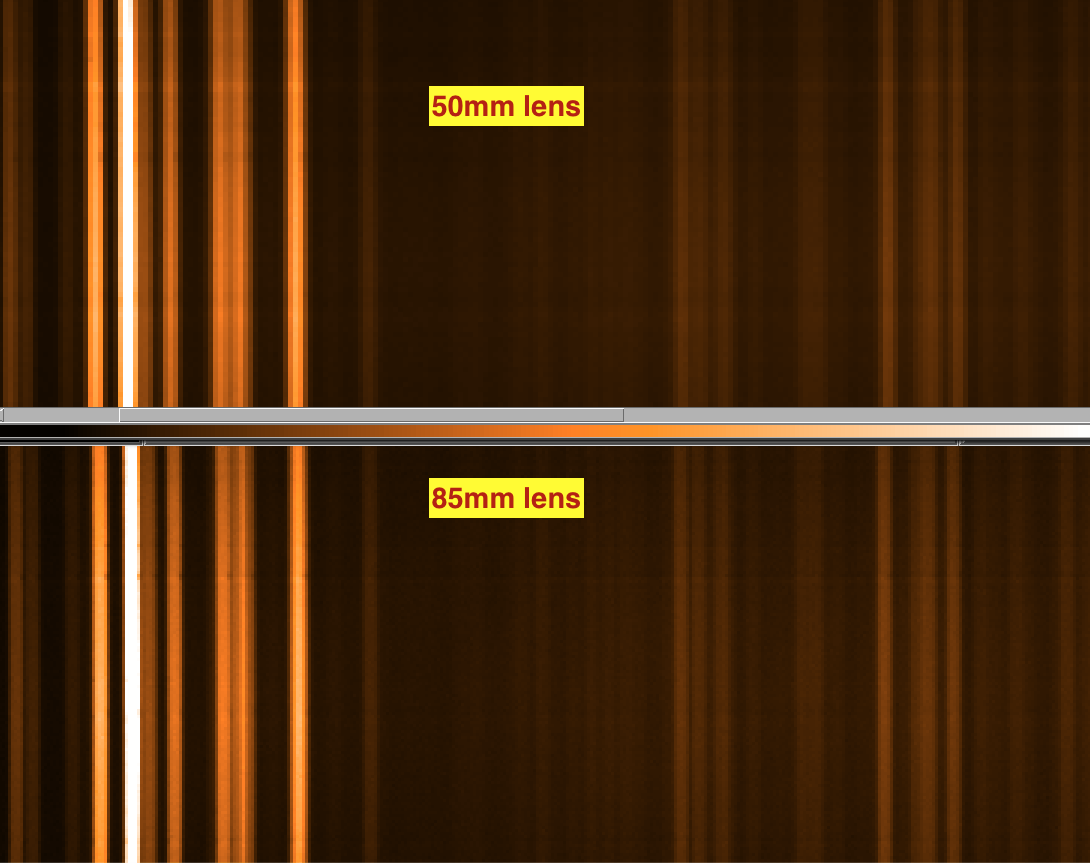Difference between revisions of "50mmLensTest"
| (5 intermediate revisions by the same user not shown) | |||
| Line 2: | Line 2: | ||
SPRAT on LT works from 4000 - 8000 Angstroms. This "one-octave" range is the most one | SPRAT on LT works from 4000 - 8000 Angstroms. This "one-octave" range is the most one | ||
can get before order overlap in a non cross dispersed spectrograph. | can get before order overlap in a non cross dispersed spectrograph. | ||
| + | |||
| + | A possible design option is to combine SHOC and SPRAT into one instrument. The following | ||
| + | describes some testing of this concept on the Liverpool Telescope (LT) version of SPRAT. | ||
| + | |||
| + | === Wavelength Range === | ||
On the afternoon of 2017 12 17 the 85mm f/1.8 Nikon camera lens | On the afternoon of 2017 12 17 the 85mm f/1.8 Nikon camera lens | ||
| Line 44: | Line 49: | ||
the camera slightly. A range of 3950 Angstroms is available, which basically | the camera slightly. A range of 3950 Angstroms is available, which basically | ||
meets the design requirement to cover one full octave. | meets the design requirement to cover one full octave. | ||
| + | |||
| + | === Optical Quality === | ||
| + | |||
| + | Comparisons of the extracted arcs using either lens show essentially identical optical | ||
| + | quality: | ||
| + | |||
| + | [[File:sprat-comp-1.png]] | ||
| + | |||
| + | [[File:sprat-comp-2.png]] | ||
| + | |||
| + | The 50mm lens version looks slightly softer in images, but remember the pixel | ||
| + | sampling is half what it would be using the SHOK camera, so its not really | ||
| + | a fair comparison. | ||
| + | |||
| + | [[File:image-comp.png]] | ||
Latest revision as of 15:52, 22 December 2017
SPRAT on LT works from 4000 - 8000 Angstroms. This "one-octave" range is the most one can get before order overlap in a non cross dispersed spectrograph.
A possible design option is to combine SHOC and SPRAT into one instrument. The following describes some testing of this concept on the Liverpool Telescope (LT) version of SPRAT.
Wavelength Range
On the afternoon of 2017 12 17 the 85mm f/1.8 Nikon camera lens on the LT SPRAT spectrograph was swapped for a 50mm f/1.4 lens. Both lenses are used wide open. This was to test what spectral range we could get on a smaller SHOC type EMCCD detector which has 1024 x 13 micron pixels as opposed to the current SPRAT iDus detector which has 1024 x 26 micron pixels.
The length of the SHOK detector would therefore correspond to 512 SPRAT pixels. This means we have to use a wider angle lens to capture the same wavelength range spectrum on a smaller physical length (half the size). The current 85mm lens actually on the SPRAT CCD has an unused portion on the left hand side, and it was calculated that the 50mm lens should "just" work. This test is independent of the final collimator focal length chosen for the instrument, as the spectral range on the detector is just a function of the grating lines per mm, the camera focal length and the detector length.
Subsetting a region 512 pixels long (numbers 298-810) from the SPRAT detector with the 50mm lens and taking a Xenon arc we found the following 2nd order fit:
Mean dispersion = 7.70 angstroms/channel Start wavelength = 4073.64 angstroms End wavelength = 8018.33 angstroms Central wavelength = 6009.04 angstroms
Line Wavelength Calculated Discrepancy RMS if
Wavelength omitted
1 57.717 4500.980 4498.411 -2.569 3.411
2 74.249 4624.280 4622.838 -1.441 3.500
3 80.635 4671.230 4670.978 -0.252 3.534
4 88.689 4734.150 4731.747 -2.403 3.443
5 128.755 5027.280 5035.034 7.754 2.445
6 232.592 5823.890 5828.632 4.742 3.090
7 340.583 6668.920 6665.565 -3.354 3.335
8 348.130 6728.010 6724.497 -3.513 3.319
9 398.201 7119.600 7116.941 -2.659 3.424
10 457.434 7584.680 7584.477 -0.204 3.534
11 464.812 7642.020 7642.967 0.947 3.519
12 495.944 7887.400 7890.354 2.954 3.319
RMS error: 3.384 Angstroms
This can be tweaked slightly (e.g. to go from 4000 to 7950 Angstroms) by titling the camera slightly. A range of 3950 Angstroms is available, which basically meets the design requirement to cover one full octave.
Optical Quality
Comparisons of the extracted arcs using either lens show essentially identical optical quality:
The 50mm lens version looks slightly softer in images, but remember the pixel sampling is half what it would be using the SHOK camera, so its not really a fair comparison.


